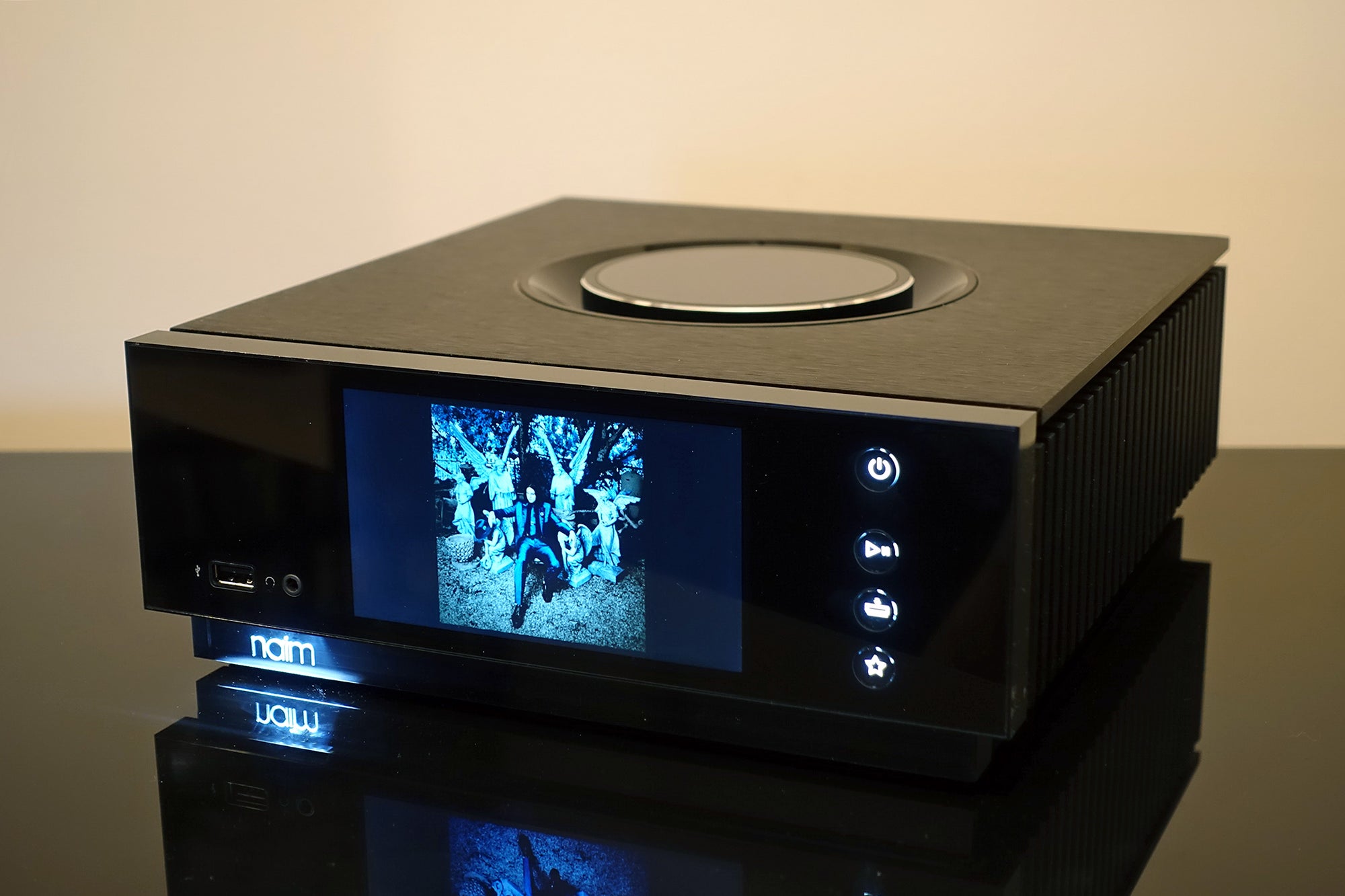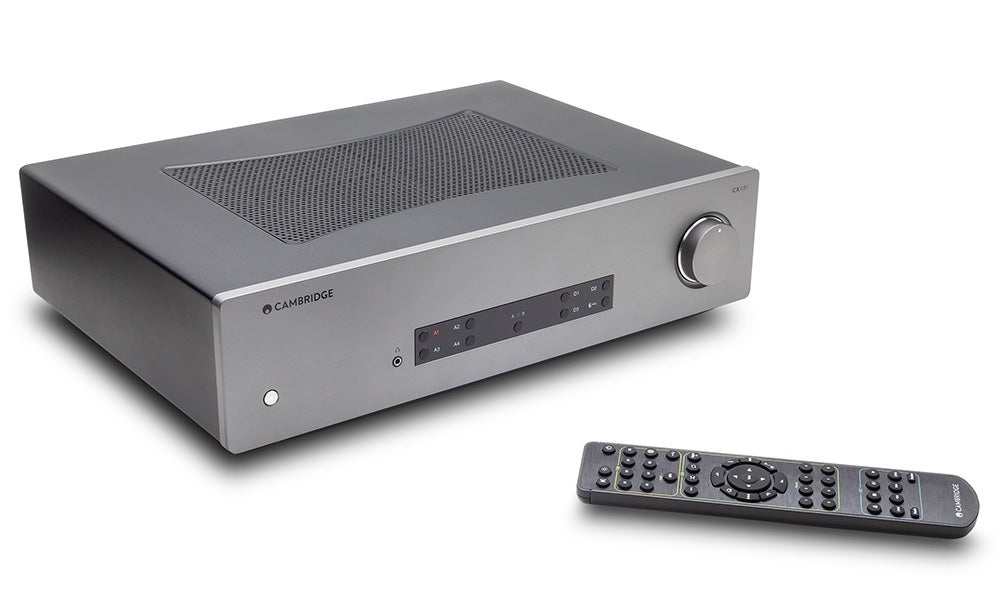Mission 700 Review
Back to the future, again
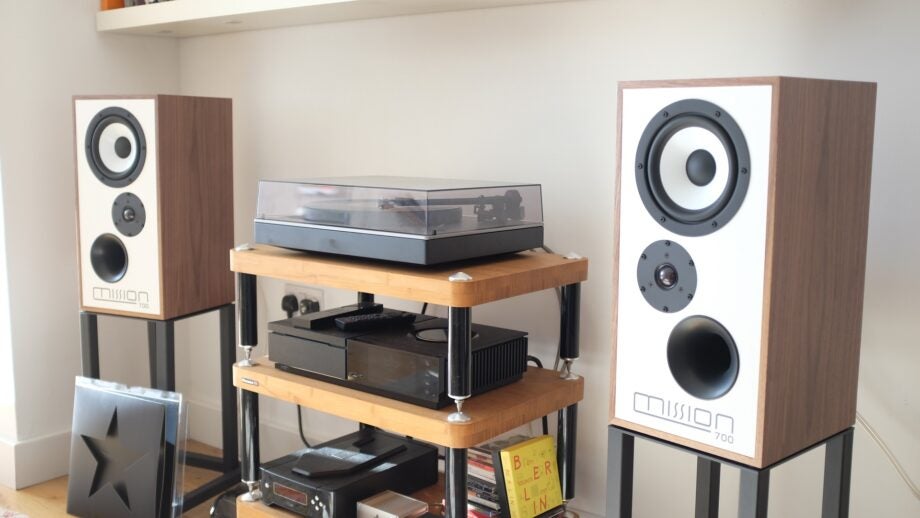

Verdict
The Mission 700 speakers are fitter for the 21st-century purpose than you might imagine – but they’re far from being the only game in town…
Pros
- Great clarity, spaciousness and sonic authority
- Plenty of drive and dynamism
- Nicely made and finished
Cons
- Not the most well-integrated loudspeaker I’ve heard
- Treble can get overconfident
- Space-hungry
Key Features
- CabinetTwo-way vented cabinet
- Drive units165mm mid/bass driver, 28mmm soft-dome tweeter
Introduction
Mission first launched its 700 standmount speakers in 1980. The world’s changed more than somewhat since then, but Mission nevertheless thinks the time is right to reintroduce a decades-old design, as it hopes that the speakers’ look and proportions will be perceived as thrillingly retro rather than tediously old-fashioned.
It’s not the only loudspeaker brand that’s revisiting former glories. JBL and Wharfedale, to name but two, are currently doing much the same with their own back catalogues. But is there any point to it – or is it just an exercise in nostalgia?
Availability
- UKRRP: £1299
- USARRP: $1999
- EuropeTBC
- CanadaTBC
- AustraliaRRP: AU$2799
The Mission 700 speakers are priced at £1,299 per pair. You may also wish to avail yourself of the bespoke speaker stand that accompanies them: you’ll pay £299 per pair, but if you buy them at the same time as the speakers, you’re looking at £1,499 all-in. In the US, the speakers cost $1,999, while in Australia, you’ll have to part with AU$2,799.
When it comes to standmount speakers at this sort of price, it almost goes without saying that you have a lot of choices from very reputable brands. What this kind of outlay is unlikely to buy anywhere else, however, is quite as much cabinet.
Design
- 510x260x270mm
- 12.8kg
- A choice of finishes
Mission rather optimistically suggests the 700 is a compact design. But given the dimensions, and bearing in mind that depth increases to 292mm when you include the speaker cable terminals, it becomes apparent “compact” is a relative term.
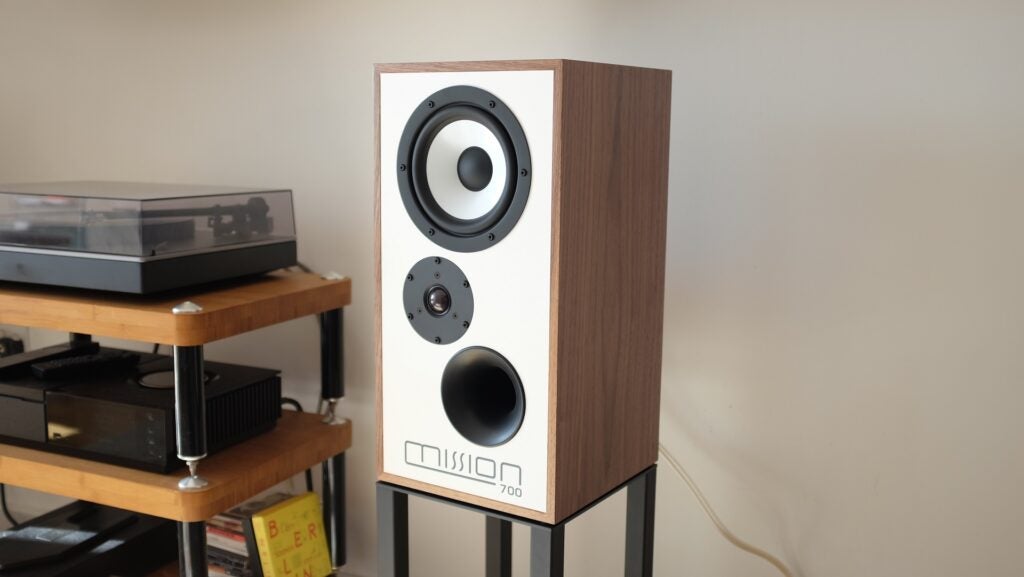
Although these speakers are pretty much the same size as the original 700 from 1980, they are much heavier in their latest incarnation. That’s because Mission has used MDF (medium density fibreboard) and particle board, sandwiched together using a layer of damping adhesive plus significant internal bracing in an effort to deliver a stiff, low-resonance cabinet. What the previous 700 had was fundamentally just a wooden box.
The laminated white baffle – with its oversized rendering of an admittedly evocative but nevertheless quite unpleasant brand logo – is carried over from the original design. The choice of black or walnut real-wood veneers is a nod to the past, too.
Features
- 165mm mineral-loaded polypropylene mid/bass driver
- 28mm coated microfibre polyester dome tweeter
- Inverted driver geometry
Part of the unique visual appeal of the original Mission 700 was the driver arrangement. So naturally enough, it makes an appearance here as well.
The unconventional nature of Mission’s Inverted Driver Geometry is more than just an aesthetic design choice, however. Positioning the tweeter below the mid/bass driver (and paying close attention to the crossover network) is, Mission reckons, the best way to deliver class-leading time alignment. But while the driver layout is old-school Mission, the drivers themselves are no throwbacks.
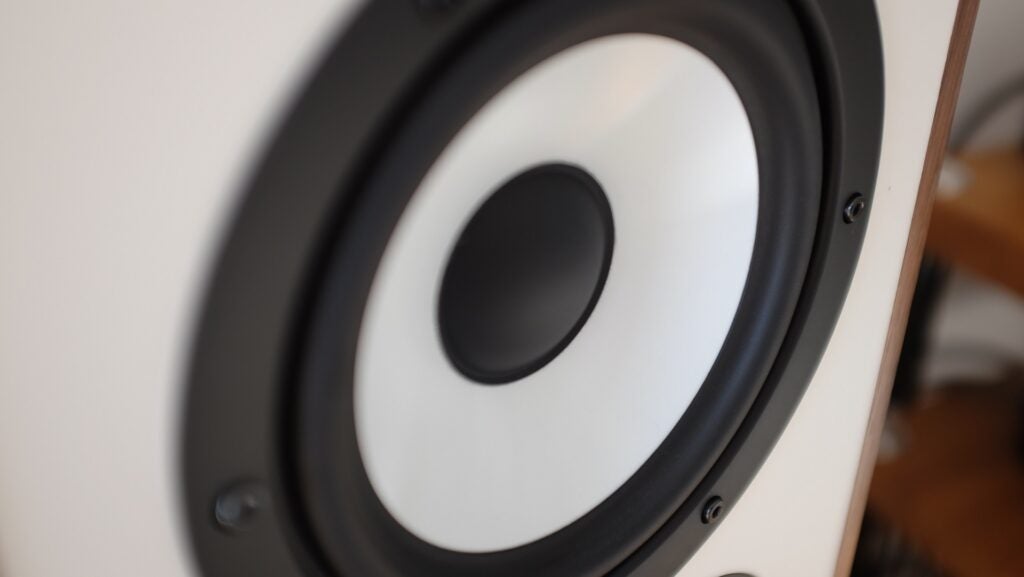
The mid/bass driver is a 165mm mineral-loaded polypropylene cone inside a low-density surround and backed into a rigid die-cast chassis. The aim is to control cone-termination characteristics in order to deliver dynamic potency and sonic speed, and a driver such as this (with stiffness and light weight on its side) is ideal.
The offset tweeter, meanwhile, is the same 28mm coated microfibre polyester dome that’s fitted to the (also recently resurrected and also visually retro) Mission 770 speaker. The tweeter sits in front of a damped rear chamber, tuned for effective resonance control. At the bottom of the front of the cabinet, there’s a bass reflex port, although it’s bigger and far more flared than the one fitted to the original speaker.
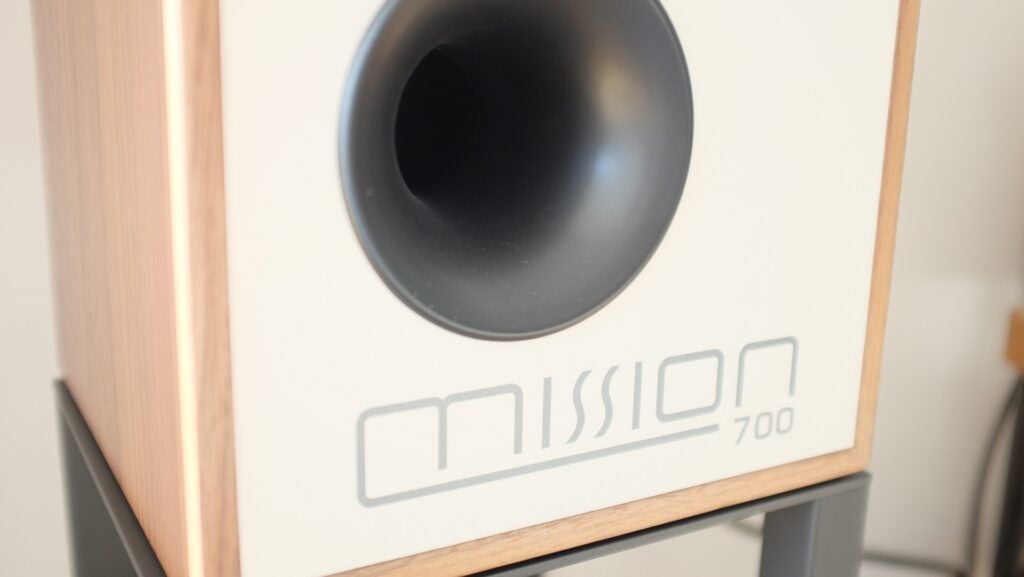
Crossover between the drive units occurs at 3kHz, which is a sensible place for it to happen. In an effort to keep signal paths as short and simple as possible, Mission has fitted separate boards for the tweeter and mid/bass driver crossover networks. Software-driven crossover mapping should – at least in theory – result in smooth driver integration.
At the rear of the cabinet, there’s a single pair of quite chunky speaker binding posts. They can accept bare wire or 4mm banana plugs. And once your speakers are wired in, they’re pretty easy-going about where you position them – within reason, of course. Clear of a side wall and maybe a metre or so ahead of a rear wall is what they prefer, and a little toe-in towards your seated position doesn’t go amiss either.
Sound Quality
- Ample scale and control
- Midrange clarity and detail is impressive
- Some estrangement between the pair of drivers
Playing into the hands of the Mission 700 isn’t all that difficult. If the music you listen to is dynamic, widescreen and punchy, these speakers will lap it up. A listen to Crush by Floating Points confirms it.
Low-end presence and reach are admirable, and these are matched by a degree of grip and control that means there’s no overhang to bass sounds here no matter how punchy they are. Bass dynamism is never in doubt, and there’s a lot of detail regarding tone and texture revealed just as readily as the high levels of attack.
The 700 speakers establish a big, broad and coherently laid out soundstage, too, with solid stereo focus and more than enough breathing space for each element of a recording to do its thing without being impacted. They’re always an upfront and attacking listen, however, which can sometimes result in the soundstage existing much more in the left/right and up/down planes than it does in the front/back. In the wrong circumstances, it can sound like each part of a recording is attempting to storm the front of the stage.
At the top end, there’s an authentic crunch and bite to treble sounds. This is unarguably exciting and invigorating when the material you’re listening to is sympathetic to these traits but rather wearying if it’s not. It also means you need to take a degree of care with partnering electronics – any amplification with a big treble emphasis should be avoided.
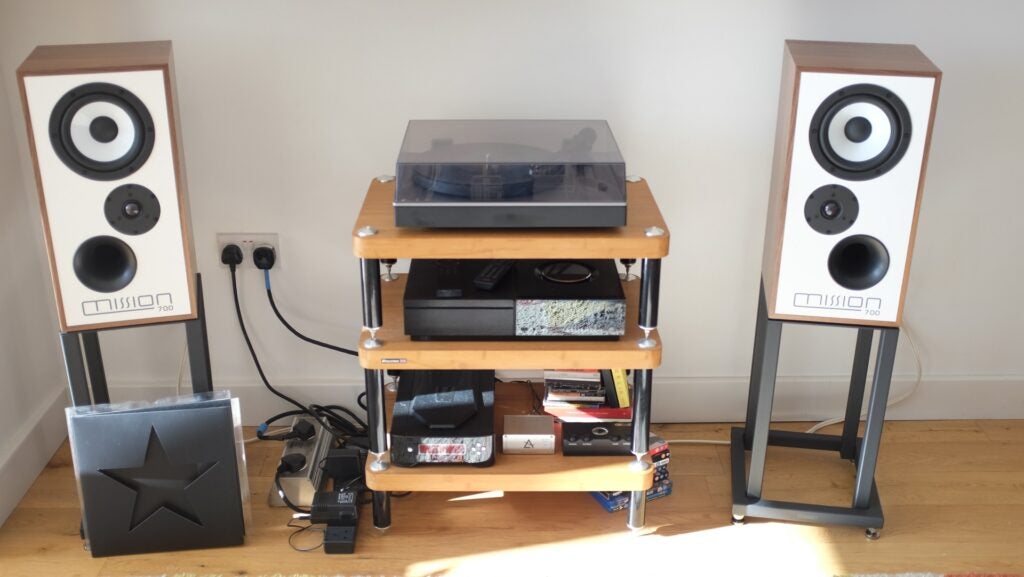
Swapping to MC Solaar’s Qui Sème le Vent Récolte le Tempo lets the speakers showcase their powers of midrange resolution – which are considerable. The admirable clarity, lavish levels of detail and attentiveness to transient occurrences all impress, and they allow the rapper real character and expression. The space around his voice only adds to the semblance of clarity, and the insight into his attitude and mic technique is considerable. It’s a really eloquent presentation, even if Solaar’s language is foreign to you.
Dynamic potency is never in doubt, either, as the speakers are able to switch from small to big volumes without breaking audible sweat. As their appearance also tends to suggest, they thrive on bigger volumes – the louder you like it, the more they sound energetic and engaged.
Naturally, however, they’re not perfect. As much as Mission will tell you that oddball driver arrangement is essential to convincing time alignment, the 700 speakers are not the most cohesive or unified listening experience that this sort of money will buy you. And despite all the efforts the brand has made where crossover is concerned, there’s an audible notch (or indent) where the handover between drivers occurs.
That’s not to suggest these speakers don’t get much more right than they get wrong. Those who like it big and bold (and don’t have a treble-happy amp) definitely need to have a listen.
Latest deals
Should you buy it?
You like looking back to look forward: There’s a lot to be said for up-to-the-minute technology hiding behind old-school appearances.
You already own some “lively” electronics: The Mission 700 speakers don’t need any encouragement to become quite treble-centric.
Final Thoughts
Ultimately, it’s going to come down to both the audio emphasis you like and the visual statement you want to make. After all, this sort of money will buy some very accomplished speakers from the likes of KEF and Bowers & Wilkins. But spending your cash with one of those brands instead won’t take you back to the future. So what is it that you want new loudspeakers for?
How we test
We test every hi-fi speaker we review thoroughly over an extended period of time. We use industry-standard tests to compare features properly. We’ll always tell you what we find. We never, ever, accept money to review a product.
Find out more about how we test in our ethics policy.
Tested over several days
Tested with real world use
FAQs
Bi-wiring is not possible with these Mission 700 standmount speakers. All they have is a standard single-wired connection to partner with an amplifier.
Full specs
Sustainability
Trusted Reviews’ holds the fact that global warming is not a myth as a core value and will continuously endeavour to help protect our planet from harm in its business practices.
As part of this mission, whenever we review a product we send the company a series of questions to help us gauge and make transparent the impact the device has on the environment.
We currently haven’t received answers to the questions on this product, but will update this page the moment we do. You can see a detailed breakdown of the questions we ask and why in our sustainability info page.



